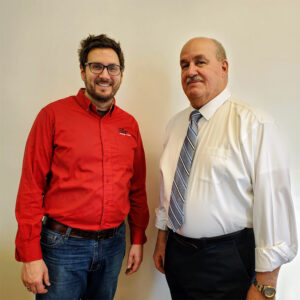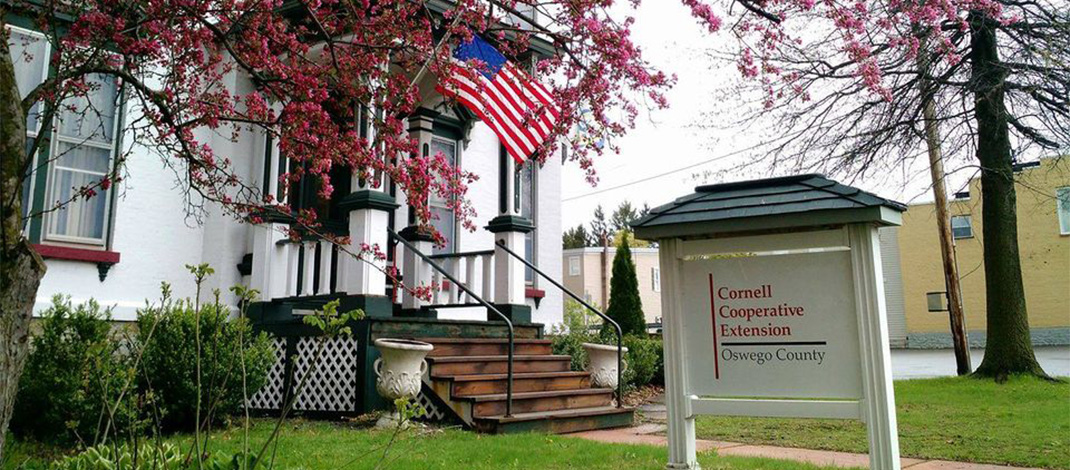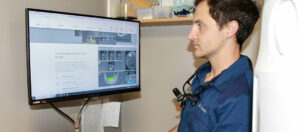Cooperative Extension started in Oswego County in 1913; it’s rooted in a program initiated under President Lincoln
By Stefan Yablonski

As the young country of America began to move west, Cooperative Extension was born to help facilitate that growth.
Professors from Cornell University would take trains to the new frontier and help settlers solve problems.
“Eventually, the cost of the program became problematic. The Land Grant University System was put into place. Every state in America has a university or college that functions as a Land Grant site,” said Paul A. Forestiere II, executive director of Oswego County’s Cornell Cooperative Extension. “Here in New York it’s Cornell; in New Jersey it’s Rutgers —University of Michigan, University of Florida — all of those universities have a responsibility to provide information to the people of their state so that their questions can be answered. Abraham Lincoln is the father of the Land Grant University system. He signed the law that changed America.”
The Land Grant system is an educational partnership between county, state and federal governments.
Each county’s Cooperative Extension association is an independent employer, governed by an elected board of directors and is responsive to county government with general oversight from Cornell University. All associations work to meet local needs as well as state and national goals.
Professors stayed at the university, did the research and passed their findings along to a group of people who went out and taught others. That group was Cooperative Extension.
There is a Cooperative Extension in every county. The organization has also expanded into some other countries.
In 1912, a state statute established associations as subordinate government agencies, and further legislation the next year provided funding to support the system of county extension associations.
A state law brought extension into being in 1912 — the federal law was the following year in 1913.
In 1913, Cooperative Extension started in Oswego County.
The very first county to get Cooperative Extension was Broome County.
“They were all alone — it was Broome and Broome back in 1912. They had the very first extension agent in the state of New York,” Forestiere said.
The last county to go was around 1960-something.
“There were a couple holdouts for quite a while,” he said. “There were some counties, I guess, that just didn’t see the value in it.”
“It’s our job to take information — information that we know is tried and true — and share it,” he said.
There are more farms in Oswego County than people realize. There are 612.
If you look at the census for New York, farms are declining (Ag census is every five years, most recent being 2017).
New York is declining; it’s not just Oswego County, he pointed out.
The number of consolidation is part of the reason for the overall decline.
There are still a lot of farms all over Oswego County. Beef and dairy, orchards and muck farms. If you look at the county, maple, beef, Christmas trees, fruits and vegetable are expanding —dairy is not.
“We don’t do anything for anybody. We’ll teach you how to do it — but we don’t do it for you. Cooperative Extension’s mission is to educate the masses; education that takes place outside of the classroom. That’s what we do; we educate, real world, real time,” Forestiere said. “This is what it’s all about.”
Cooperative Extension enables people to improve their lives and communities through partnerships that put experience and research knowledge to work. Extension staff and trained volunteers deliver education programs, conduct applied research and encourage community collaborations.
Educators connect people with the information they need on topics such as commercial and consumer agriculture; nutrition and health; youth and families; finances; energy efficiency; economic and community development; and sustainable natural resources. Their ability to match university resources with community needs helps CCE play a vital role in the lives of individuals, families, businesses and communities throughout Oswego County.
“We run the agriculture program, we run the 4–H program and we run a human ecology program — which is a fancy way of saying nutrition, heath and safety education,” he explained. “We partnered with the county health department to do what’s called the healthy families New York program.”
Oswego County 4-H celebrated its centennial year from October 2021 to October 2022.
It provides youth with fun hands-on educational experiences that will help them develop life skills such as confidence, leadership, cooperation and responsibility. It also provides adults the opportunity to grow through working with youth.
The Oswego County 4-H owns and operates the Amboy 4-H Environmental Education Center near Williamstown.
Cornell Cooperative Extension of Oswego County also offers a number of educational programs on health and nutrition for every age group. Programs are available in group, or in some instances, one-on-one settings.
Mission: Interpret, Disseminate and Deliver Research-based Information
Cornell Cooperative Extension of Oswego County’s mission is to interpret, disseminate and deliver research-based information and knowledge on issues relevant to Oswego County youth, individuals, families, farms, small business, and communities and further, to contribute to improving the quality of life through education and empowering volunteers and staff to lead, guide and teach. Program areas of particular importance to Oswego County include agriculture, youth development, human ecology and natural resource management.
Cornell Cooperative Extension of Oswego County is located at 3288 Main St.
Mexico, New York. It’s open from 8:30 a.m. – 4 p.m., Monday through Friday.
For more information on any program, call 315-963-7286 or visit oswego@cornell.edu.



